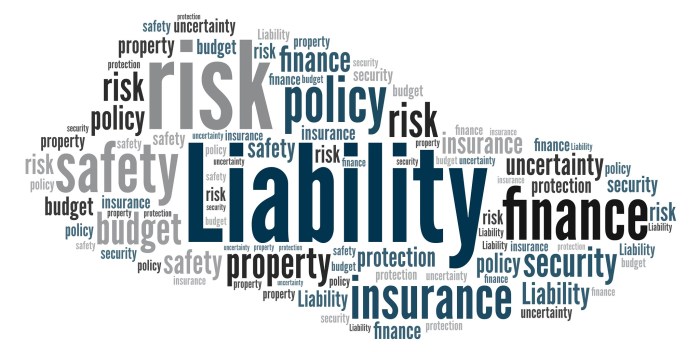
Business liability insurance is a crucial safeguard for companies of all sizes, protecting them from potential financial risks and legal liabilities. Let's delve into the intricacies of this essential coverage to understand its significance and implications.
As we explore the various facets of business liability insurance, we will uncover the types of coverage available, factors influencing costs, considerations for choosing the right policy, legal requirements, and the claims process.
Overview of Business Liability Insurance
Business liability insurance is a type of insurance that provides protection to a business in case it is held liable for damages or injuries caused to others. It is essential for businesses of all sizes to have liability insurance to safeguard their assets and reputation in the event of unforeseen circumstances.
Types of Liabilities Covered by Business Liability Insurance
- General Liability: Covers third-party bodily injuries, property damage, and advertising injuries.
- Professional Liability: Protects against claims of negligence, errors, or omissions in services provided.
- Product Liability: Covers damages caused by products sold or manufactured by the business.
Consequences of Not Having Business Liability Insurance
Not having business liability insurance can have severe consequences for a business, including:
- Financial Loss: Without insurance, the business may have to pay out of pocket for legal fees, settlements, or damages awarded in lawsuits.
- Reputation Damage: Being unable to cover liabilities can tarnish the business's reputation and lead to loss of trust among customers and partners.
- Lack of Protection: The business may be at risk of closure or bankruptcy if it cannot handle the financial repercussions of a liability claim.
Types of Business Liability Insurance
General liability insurance provides coverage for common risks faced by businesses, such as bodily injury, property damage, and advertising injury. This type of insurance helps protect businesses from lawsuits and financial losses resulting from these risks.
Professional Liability Insurance
Professional liability insurance, also known as errors and omissions insurance, is essential for professions that provide services or expert advice. This type of insurance covers claims of negligence, mistakes, or failure to perform professional duties adequately. It is crucial for professions like doctors, lawyers, consultants, and accountants to protect against claims of malpractice or errors in their work.
Product Liability Insurance
Product liability insurance is designed to protect businesses that manufacture, distribute, or sell products from liability for injuries or damages caused by their products. This type of insurance covers legal fees, settlements, and judgments in case a product causes harm to consumers.
It is vital for businesses in industries like manufacturing, retail, and distribution to mitigate the risks associated with their products.
Comparison of Business Liability Insurance
- General liability insurance covers a wide range of risks, while professional liability insurance is specific to professional services.
- Product liability insurance focuses on risks related to products, unlike general liability insurance that covers broader business operations.
- Each type of business liability insurance serves a unique purpose in protecting businesses from different types of risks and liabilities.
Factors Influencing Business Liability Insurance Costs

When it comes to determining the cost of business liability insurance, there are several key factors that come into play. These factors can vary depending on the size and nature of the business, as well as its claims history and risk assessment.
Size and Nature of the Business
The size and nature of a business play a significant role in determining the cost of liability insurance. Larger businesses with more employees and higher revenues are generally considered to have a higher risk exposure, which can result in higher insurance premiums.
Additionally, businesses operating in high-risk industries such as construction or healthcare may also face higher insurance costs due to the increased likelihood of claims.
Claims History and Risk Assessment
A business's claims history and risk assessment are crucial factors that insurance companies consider when determining premiums. A history of frequent or costly claims can signal a higher risk to insurers, leading to higher premiums. On the other hand, a strong risk management program and a clean claims history can help lower insurance costs by demonstrating a lower level of risk
Choosing the Right Coverage
When it comes to business liability insurance, selecting the right coverage is crucial to protect your business from unforeseen risks. Here's a guide on how businesses can determine the appropriate coverage for their needs.
Assessing Risks
- Identify Potential Risks: Begin by assessing the specific risks that your business faces. This could include potential lawsuits, property damage, or employee injuries.
- Evaluate Risk Exposure: Determine the likelihood and potential impact of each risk. This will help you prioritize which areas require more coverage.
- Consult with Experts: Consider seeking advice from insurance professionals who can provide insights into common risks in your industry and recommend suitable coverage options.
Regular Policy Reviews
- Review Coverage Limits: Periodically review your insurance policies to ensure that the coverage limits are adequate based on your business growth and changing risks.
- Update Coverage: As your business evolves, make sure to update your insurance coverage to address new risks or changes in operations.
- Annual Check-Ups: Schedule annual reviews with your insurance provider to discuss any updates or modifications needed to your policies.
Legal Requirements and Regulations
In the realm of business liability insurance, it is crucial to understand the legal requirements and regulations that vary across different jurisdictions. These requirements shape the type and amount of coverage needed by businesses and have significant implications for non-compliance.
Legal Requirements for Business Liability Insurance
- In the United States, most states mandate that businesses carry certain types of liability insurance, such as general liability insurance, workers' compensation insurance, and professional liability insurance.
- Specific industries may have additional insurance requirements based on the nature of their operations, such as auto liability insurance for businesses with a fleet of vehicles.
- Internationally, the legal requirements for business liability insurance can vary widely, depending on the country and its regulations.
Impact of Regulations on Coverage
- Regulations play a crucial role in determining the type and amount of coverage needed by a business. For example, industries with high risks of lawsuits may be required to carry higher coverage limits.
- Regulations also influence the specific coverage options that a business must include in its insurance policy to comply with the law.
Consequences of Non-Compliance
- Failure to comply with legal requirements for business liability insurance can result in severe consequences, such as fines, penalties, or even legal action against the business.
- Non-compliance may leave a business exposed to financial risks in the event of a lawsuit or liability claim, as insurance coverage may be insufficient or invalid.
Claims Process and Coverage Limits
When it comes to business liability insurance, understanding the claims process and coverage limits is crucial for ensuring proper protection in case of unforeseen events.
Filing a Claim
- Notify your insurance provider immediately after an incident that may lead to a claim.
- Fill out a claim form provided by your insurer, including all relevant details and documentation.
- Cooperate with the insurance company's investigation and provide any additional information or evidence requested.
- Wait for the insurance company's decision on the claim, which may involve negotiations for settlements.
Impact of Coverage Limits
- Coverage limits determine the maximum amount your insurance provider will pay for a claim.
- If the claim exceeds your coverage limits, you may be responsible for paying the remaining amount out of pocket.
- Higher coverage limits usually mean higher premiums but offer more protection in case of large claims.
Scenarios for Coverage Limits
- Imagine a customer slipping and falling in your store, resulting in a severe injury. If your coverage limit is not enough to cover the medical expenses and legal fees, you may face financial liability.
- In the event of a product liability claim due to a defective product causing harm to consumers, having sufficient coverage limits can protect your business from significant financial losses.
End of Discussion
In conclusion, business liability insurance serves as a shield against unforeseen circumstances that could threaten the financial stability and reputation of a company. By understanding the nuances of this insurance, businesses can make informed decisions to protect their assets and operations effectively.
FAQ Compilation
What does business liability insurance cover?
Business liability insurance typically covers legal fees, settlements, and medical costs in case of third-party bodily injury or property damage claims.
How can businesses determine the right coverage for their needs?
Businesses can assess their risks, industry standards, and potential liabilities to determine the appropriate coverage amount and types.
Are there specific legal requirements for business liability insurance?
Legal requirements vary by jurisdiction, but businesses often need a minimum level of liability insurance to operate legally.
How do coverage limits impact claims?
Coverage limits determine the maximum amount an insurer will pay for a covered claim, so it's crucial to choose limits that adequately protect the business.














